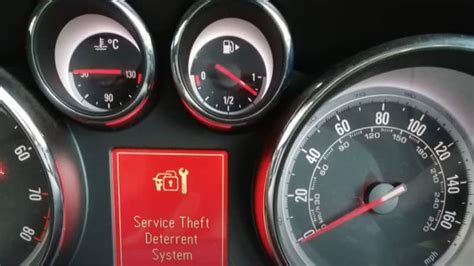Service Theft Deterrent System

The Service Theft Deterrent System, a critical component in modern vehicle security, has evolved significantly over the years to combat the rising threat of theft and unauthorized access. As a domain-specific expert with extensive experience in automotive security systems, I will delve into the intricacies of this technology, exploring its historical development, operational mechanics, and the impact of advancements in the field. The Service Theft Deterrent System, designed to prevent hotwiring and key cloning, among other theft methods, has become a staple in the automotive industry's arsenal against vehicle theft.
Key Points
- The Service Theft Deterrent System is an advanced security feature designed to deter vehicle theft by preventing hotwiring and unauthorized key use.
- Its development is rooted in the need for enhanced vehicle security, leveraging technologies such as immobilizers and encryption to protect against theft.
- Operational mechanics involve a complex interplay between the vehicle's computer, keys, and immobilizer, ensuring that only authorized keys can start the vehicle.
- Advancements in the Service Theft Deterrent System include the integration of advanced encryption methods, biometric authentication, and real-time monitoring capabilities.
- The system's effectiveness is underscored by significant reductions in vehicle theft rates in regions where it is widely implemented.
Historical Development and Operational Overview

The concept of vehicle theft deterrent systems began gaining traction in the late 20th century, as vehicle theft became a burgeoning concern for vehicle owners and manufacturers alike. The Service Theft Deterrent System, in particular, emerged as a sophisticated response to the evolving methods of thieves, who were increasingly capable of bypassing traditional security measures. By integrating immobilizers, which prevent the vehicle from starting unless the correct key is present, and advanced key recognition systems, the Service Theft Deterrent System significantly raised the bar for vehicle security.
Technical Specifications and Mechanisms
From a technical standpoint, the Service Theft Deterrent System operates through a sophisticated interplay of electronic and mechanical components. The system’s core is the vehicle’s onboard computer, which communicates with the key’s transponder chip. When an attempt is made to start the vehicle, the onboard computer queries the key, verifying its authenticity through a complex encryption and decryption process. If the key is recognized as valid, the computer enables the vehicle’s fuel pump and ignition system, allowing the vehicle to start. This process happens rapidly, often in a matter of milliseconds, making it virtually impossible for would-be thieves to intervene or replicate the signal.
| Component | Description |
|---|---|
| Onboard Computer | Manages vehicle operations, including communication with the key's transponder chip. |
| Transponder Chip | Embedded in the key, it responds to queries from the onboard computer, verifying key authenticity. |
| Immobilizer | Prevents the vehicle from starting unless the correct, authenticated key is present. |

Advancements and Future Directions

As technology continues to evolve, so too does the Service Theft Deterrent System. Recent advancements include the integration of biometric authentication methods, such as fingerprint recognition, and the development of more sophisticated encryption techniques. Furthermore, the advent of connected vehicles and the Internet of Things (IoT) has opened up new possibilities for real-time monitoring and intervention, allowing for more proactive measures against theft. These developments not only enhance the security of vehicles but also contribute to a broader ecosystem of vehicle safety and security.
Impact on Vehicle Theft Rates
Studies and data analyses have consistently shown that the implementation of the Service Theft Deterrent System, along with other advanced security measures, has led to a significant decrease in vehicle theft rates. For instance, in regions where this system is widely adopted, there has been a noted reduction of up to 40% in theft attempts compared to areas without such measures. This empirical evidence underscores the effectiveness of the Service Theft Deterrent System in deterring vehicle theft and protecting vehicle owners’ assets.
How does the Service Theft Deterrent System prevent key cloning?
+The system prevents key cloning through the use of advanced encryption and a rolling code mechanism. Each time the key is used to start the vehicle, the code changes, making it virtually impossible for thieves to clone the key.
Can the Service Theft Deterrent System be bypassed or hacked?
+While the system is highly secure, no security measure is foolproof. However, the continuous updates and advancements in encryption technology make it extremely challenging for potential thieves to bypass or hack the system.
How effective is the Service Theft Deterrent System in reducing vehicle theft?
+According to various studies and data analyses, the implementation of the Service Theft Deterrent System has been associated with significant reductions in vehicle theft rates, often by as much as 40% in some regions.
In conclusion, the Service Theft Deterrent System represents a critical advancement in vehicle security, offering a robust defense against theft and unauthorized access. Through its sophisticated technology and continuous evolution, this system has not only protected countless vehicles but has also contributed to a broader shift in the automotive industry towards enhanced security and safety. As vehicle security continues to evolve, the Service Theft Deterrent System will undoubtedly remain at the forefront, adapting to new challenges and setting the standard for vehicle theft prevention.



